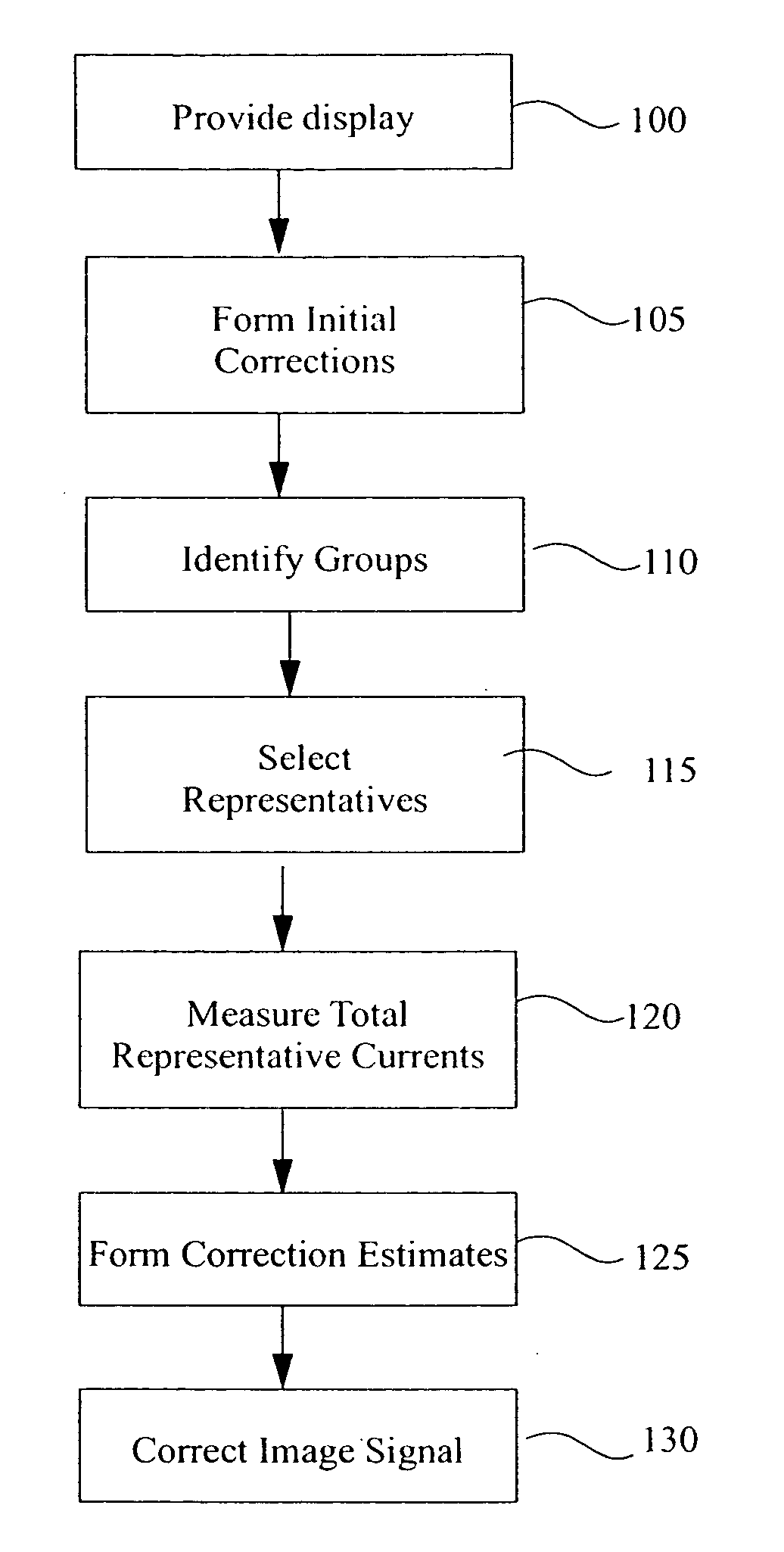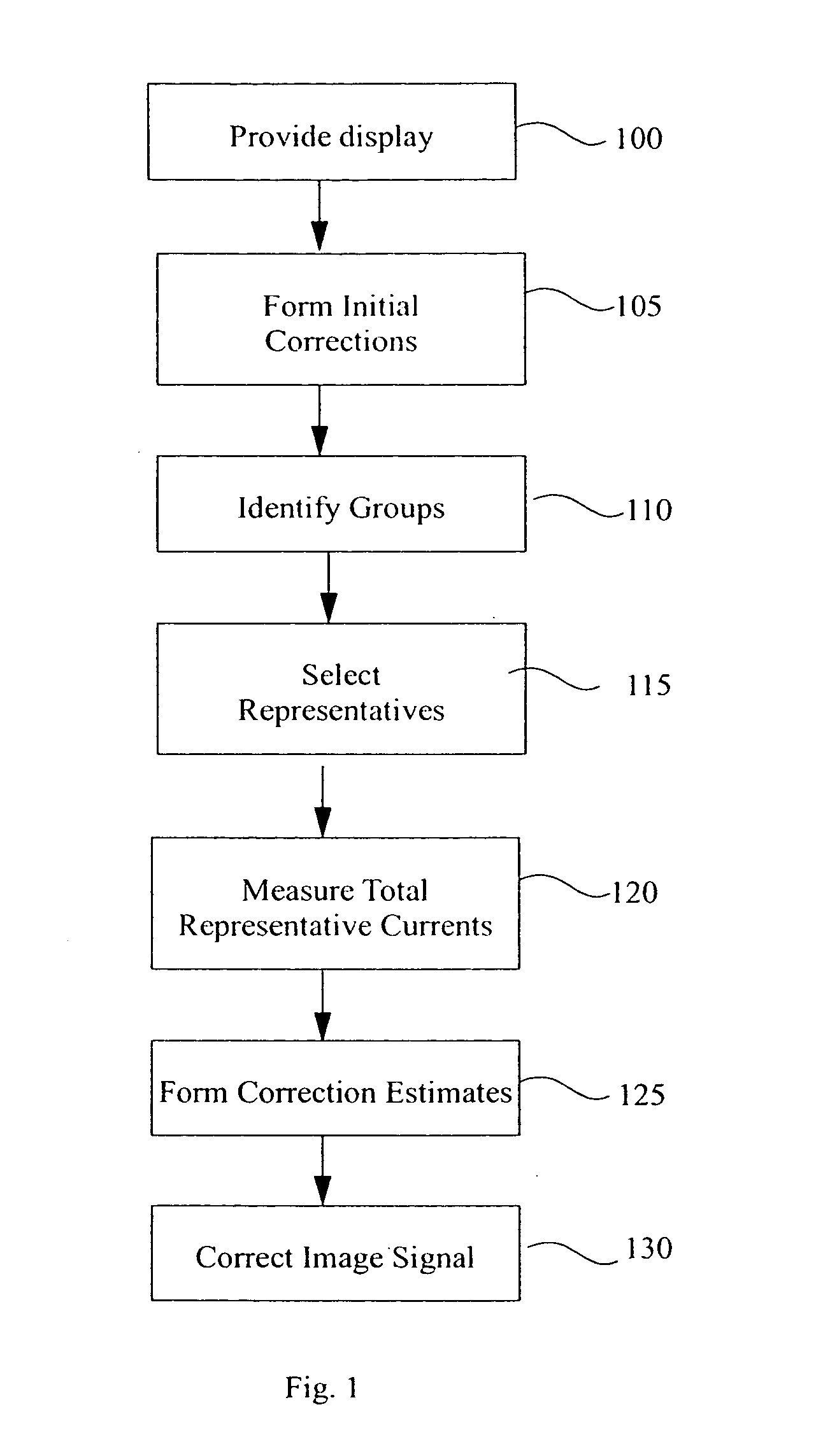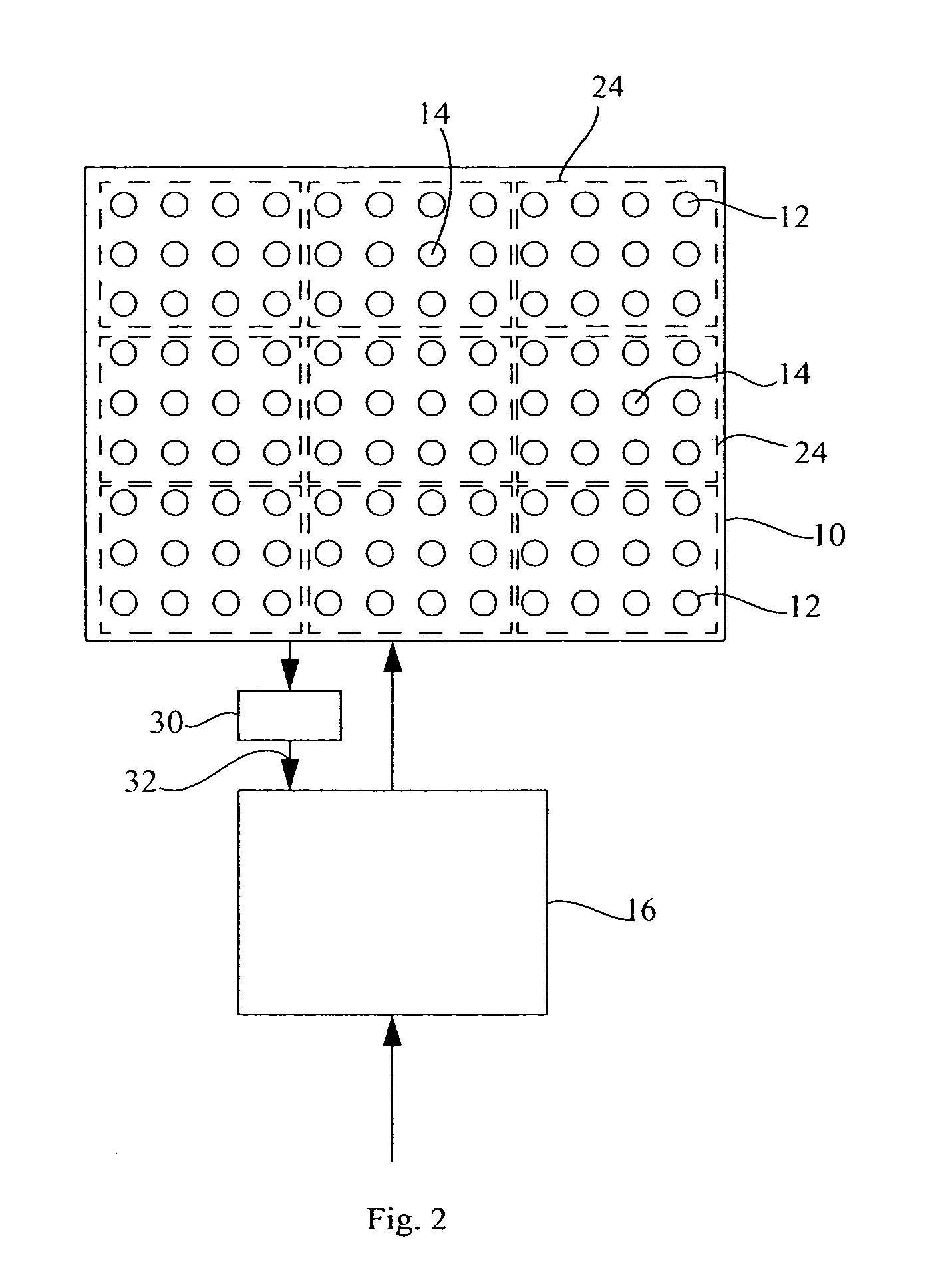Method and apparatus for uniformity and brightness correction in an amoled display
a technology of amoled display and brightness correction, which is applied in the direction of instruments, static indicating devices, etc., can solve the problems of high cost of annealing process, large non-uniformity and relatively low mobility of -film transistors, and the characterization of polysilicon thin-film transistors, so as to improve uniformity and lifetime in a display
- Summary
- Abstract
- Description
- Claims
- Application Information
AI Technical Summary
Benefits of technology
Problems solved by technology
Method used
Image
Examples
Embodiment Construction
[0016]Referring to FIG. 1, a method for reducing brightness uniformity variations in an active-matrix OLED display employing amorphous silicon thin-film transistors is disclosed, comprising the steps of providing 100 an active-matrix OLED display having amorphous silicon thin-film transistors that drive a plurality of light-emitting elements responsive to an input signal that cause the light-emitting elements to emit light; forming 105 a first correction value for each of the light-emitting elements derived from a measured or estimated value of light-emitting element performance in response to known image signals at a first time; identifying 110 a plurality of predetermined groups of light-emitting elements, the plurality of predetermined light-emitting groups including all of the light-emitting elements in the OLED display, wherein each predetermined group of light-emitting elements includes more than one light-emitting element; selecting 115 one or more representative light-emitti...
PUM
 Login to View More
Login to View More Abstract
Description
Claims
Application Information
 Login to View More
Login to View More - R&D
- Intellectual Property
- Life Sciences
- Materials
- Tech Scout
- Unparalleled Data Quality
- Higher Quality Content
- 60% Fewer Hallucinations
Browse by: Latest US Patents, China's latest patents, Technical Efficacy Thesaurus, Application Domain, Technology Topic, Popular Technical Reports.
© 2025 PatSnap. All rights reserved.Legal|Privacy policy|Modern Slavery Act Transparency Statement|Sitemap|About US| Contact US: help@patsnap.com



